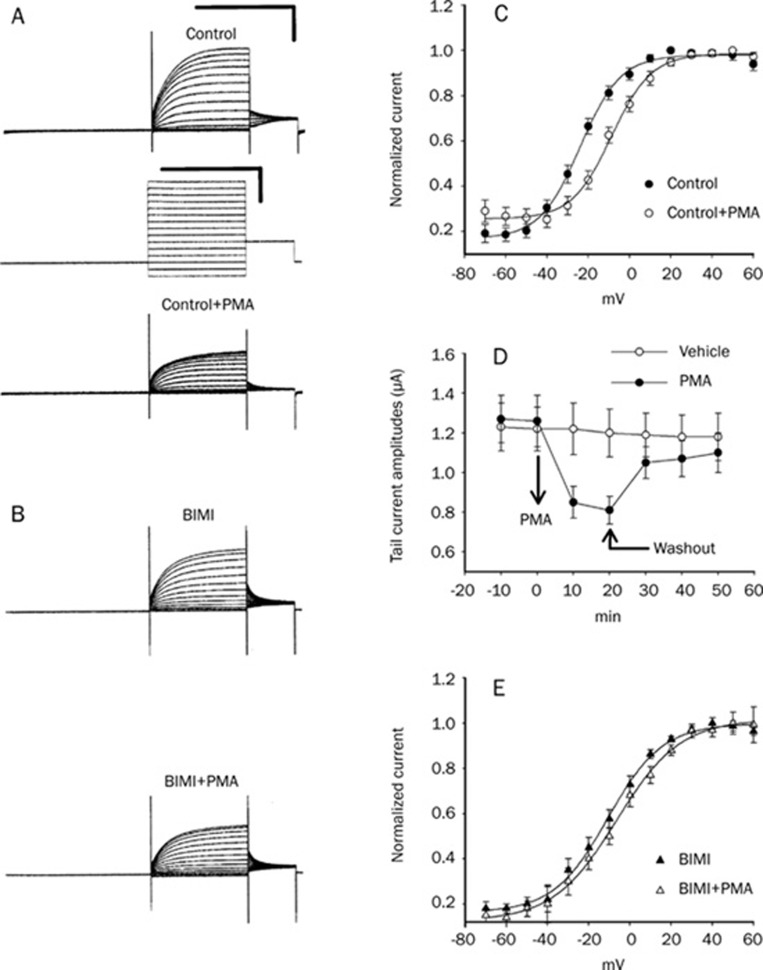Figure 2.
BIMI, a PKC inhibitor, can antagonize the effect of PMA on KCNQ4 channels. (A) The amplitudes of control KCNQ4 currents (upper traces in A) were inhibited by the application of PMA (2 μmol/L) (bottom traces in A). (B) The inhibitory effect of PMA on the KCNQ4 current was attenuated by pretreatment with BIMI (2 μmol/L) (upper traces: BIMI alone; bottom traces: BIMI+PMA). The voltage step protocol of (A) and (B) is as indicated in the middle of (A). Calibration scale of all current traces: 2 s and 1 μA. Calibration scale of the voltage step protocol: 2 s and 50 mV. (C) The midpoint potential of the conductance-voltage curve (V1/2) was shifted significantly to a more positive value after treatment with PMA (before PMA: • after PMA: ○). (D) Representative time courses of KCNQ4 tail-current during application of 2 μmol/L PMA (•) or vehicle (○). The effect of PMA was reversible by washout, as indicated by arrows. (E) The shift effect of V1/2 produced by PMA was attenuated by pretreatment with BIMI (BIMI alone: ▴ BIMI+PMA: △). V1/2 was obtained from the conductance-voltage curves, which were fitted using a two-state Boltzmann equation as described in the Materials and Methods.

